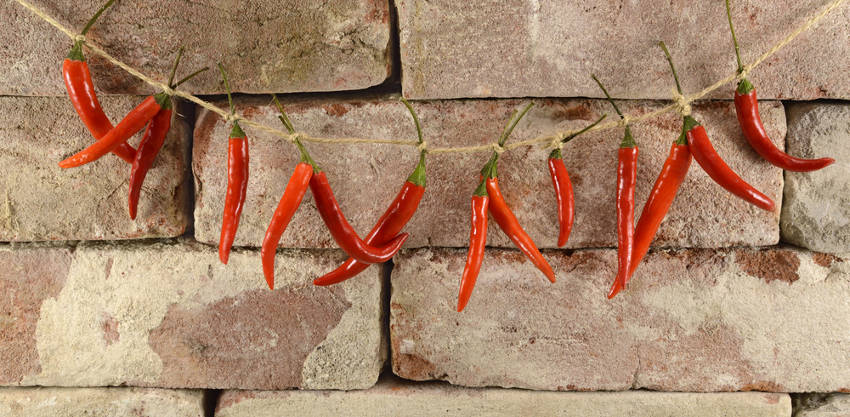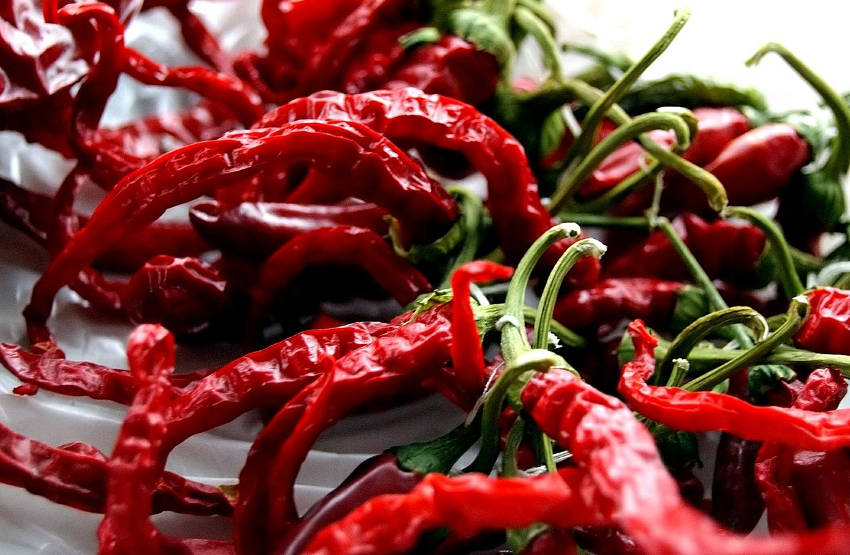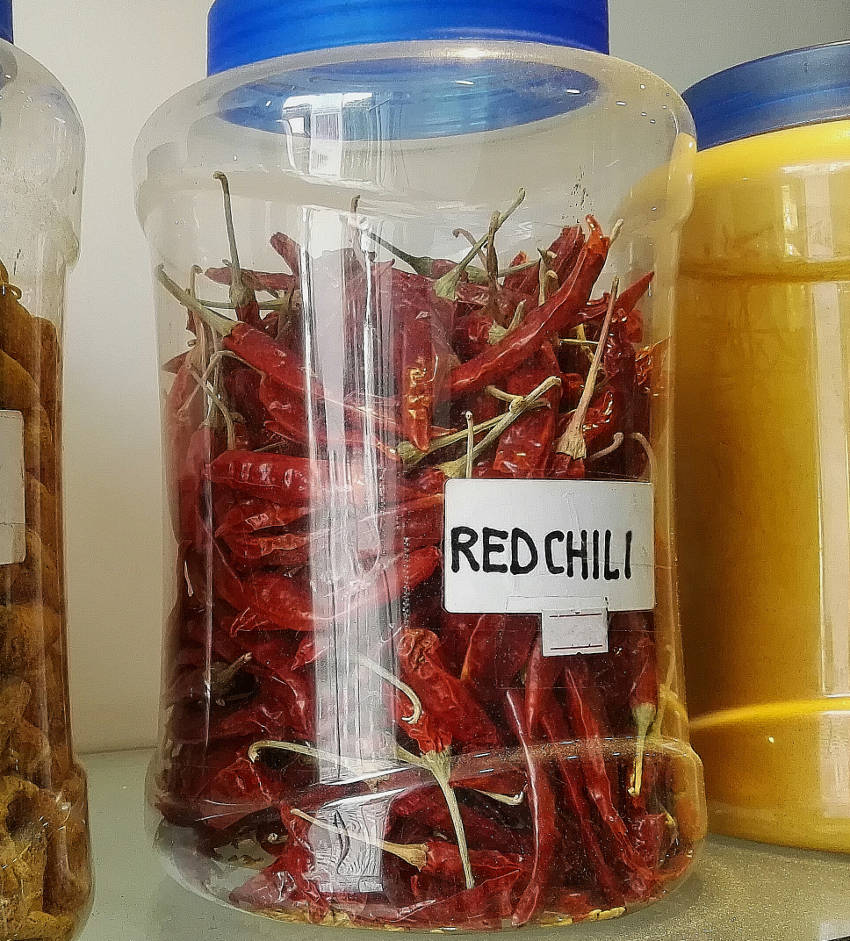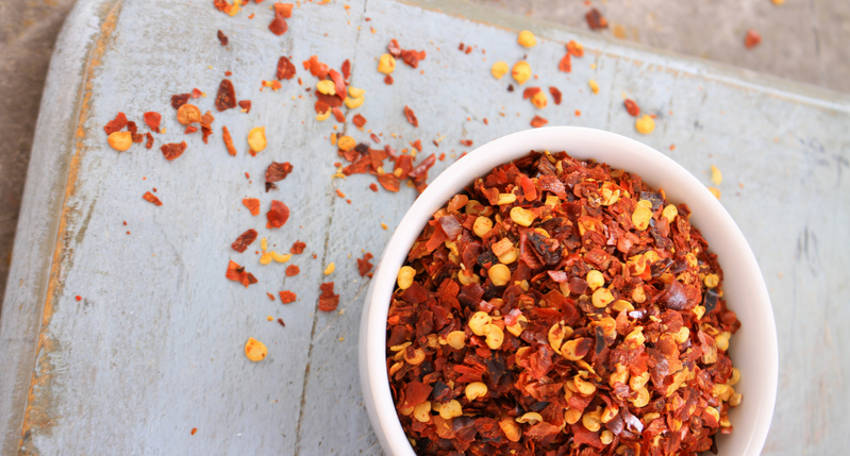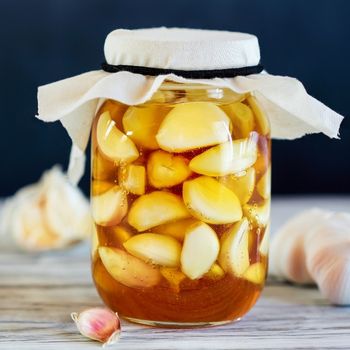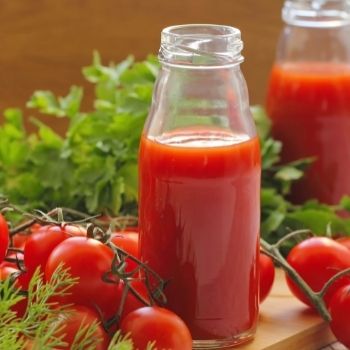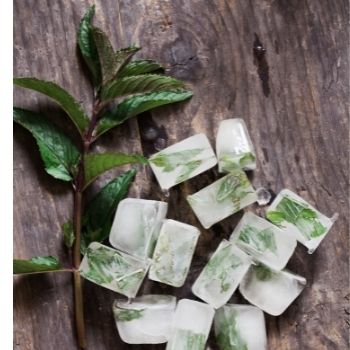Enjoying a Bumper Crop of Chillies? Here's how to dry them so they'll keep for months:
At some stage, most green-fingered chilli lovers decide to grow their own plants for a ready supply of fiery chillies. Not only does this give the great satisfaction of combining two passions into one, but home-grown chillies provide greater variety and better quality than a visit to the supermarket.
While chillies have a reputation for being difficult to grow, they're nowhere near as fearsome as some gardeners imagine. With a bit of care and practice you'll soon be enjoying a bumper crop of your own infernal fruits. In a productive year, even a single chilli plant can supply far more fruit than most people can get through, and so you'll need to find a way to store them for future use.
Drying chillies lets them be kept for months or even years, while also intensifying their heat and flavour as a welcome side effect. There are three straightforward methods of doing this: air drying, oven drying, and using them to make chilli salt. Here's what to do.
Preparing Your Chillies
For drying, use only good-quality, ripened chillies with no signs of damage or decay. Lesser-quality chillies are excellent for chutneys and pickles, but they may not survive the drying process, and can even risk tainting your entire batch with mould.
Any variety of chilli peppers can be used, but bear in mind that the larger the fruit, the longer the drying process will take, and the greater the risk of spoilage in less-than-ideal conditions. Also, while unripe green chillies can be dried, the end result usually lacks the intense heat and flavour of dried red chillies.
For all three drying methods, the chillies should first be washed thoroughly and allowed to drain well.
Air Drying
This is, of course, the traditional method of drying, used in chilli-eating cultures across the world. The method is simplicity in itself - but it relies on having access to the right climate and location.
First, tie or thread the chillies at their stems along a length of string or heavy cotton. Keep them well spaced and avoid letting the chillies touch as much as possible; although tightly wrapped bunches of dried chillies look great hanging in a kitchen, air needs to circulate freely around each chilli during drying.
Next, hang the string in a dry, airy, and warm place, such as a covered outdoor balcony or passageway. Hanging in direct sun will speed up the process, but it's easy to overshoot and be left with brittle, bleached fruits with impaired flavour.
If you have no suitable space outdoors, you can still air dry indoors, but make sure to choose a well-ventilated room to not only reduce the chances of mould, but to prevent spicy fumes from building up.
Depending on the conditions, your chillies should be ready within a few days to a week or so, by which time they'll be dry to the touch but not completely desiccated.
Oven Drying
However, if your local climate is unsuitable for air drying, you can use a more modern version of the same process. Drying chillies in a domestic oven provides excellent results in a fraction of the time of air drying.
Simply place your chillies on a non-stick baking tray, or one lined with baking paper, laid out in a single layer without touching. Some recipes recommend splitting the chillies along their length, but while this may speed up drying, it can be at the expense of the final flavour as essential oils evaporate along with the moisture.
Place the tray in your oven at its lowest setting, turning the fruits every hour or so to prevent them from sticking and to even out the heat. If they seem to be burning or sizzling, reduce the heat, or remove and allow to cool for a while.
If you have a fan oven, switching this on will speed things up, and you can also leave the oven door slightly ajar to increase airflow - but make sure your kitchen is also well-ventilated to disperse the eye-watering vapours that this can generate.
There's no set time scale for oven drying, but between four hours and overnight is a good estimate. Once the chillies are completely dry but not shrivelled to a husk, turn off the oven and let the chillis' cool naturally.
Storing and Using Air-Dried and Oven-Dried Chillies
Whichever of these two methods you use, once your chillies are completely dried, they should be stored in an airtight container in a cool, dark place. Bunches of dried chillies may be attractive, but they'll lose their flavour more quickly.
Properly stored, the chillies will last indefinitely. Over time their intensity will fade, but you should certainly be enjoying them at respectable strength until your next harvest comes around.
Using Your Dried Chillies
Smaller chillies can be added whole to heated oil to infuse flavour, especially in classic dishes such as the Italian aglio e olio (pasta with oil, garlic, and chilli), or dropped into curries and stews. They can also be rehydrated by soaking in warm water until they plump up, after which they can be chopped or blended for use in sauces or relishes, giving a finer texture than using dried chillies directly.
Larger specimens are perhaps best used crumbled into flakes as coarsely or finely as you like, so that you can use a pinch here and there without overpowering the dish.
Lastly, one of the best ways to deal with an abundance of dried chillies is to use a food processor or coffee grinder to produce your own chilli powder. This is an especially good plan if you've grown several varieties, or they have slightly varying stages of ripeness, as making powder from a varied mix will give far more depth of taste and character than any commercial powder.
Making Chilli Salt
This third option offers something a little different, and is an ideal way to turn your chillies into a long-lasting, easily used cooking ingredient or condiment.
You'll need roughly equal volumes of fresh chillies and good quality, non-iodised salt, and then to follow four simple steps.
- Wash the chillies and allow them to drain.
- Remove the stems, and also the seeds if you prefer a little less heat.
- Finely mince the fruits in a food processor, leaving them slightly coarse rather than blending to a smooth paste.
- Thoroughly mix the chillies with the salt, and store in an airtight jar.
The mixture can be used immediately, but the flavours will develop and intensify as it matures. If a liquid develops at the bottom of the jar, either add more salt, or drain it off for use as a powerful liquid seasoning.
Once the salt has soaked up all the liquid, it will last indefinitely in a cool, dark place. It can be used in any dish to add an intense salty heat (make sure to reduce the amount of any other salt in a recipe), or can be sprinkled sparingly over food as a spicy table condiment.
Growing a bumper crop of your own chillies is a wonderful achievement, but even the most ardent chilli-head can have too much of a good thing around harvest time. These three simple but effective drying methods will let you enjoy the fiery bounty for months to come.
